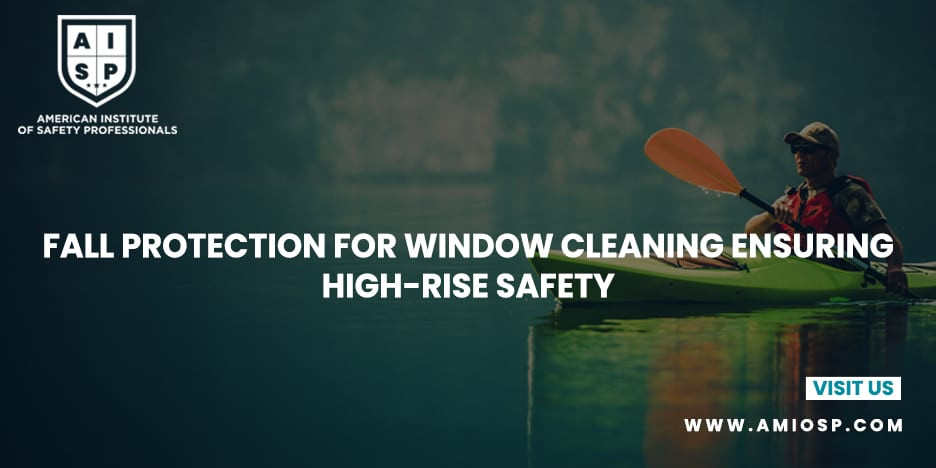Introduction
Window cleaning in high-rise buildings presents unique
challenges and risks. Workers performing these tasks are exposed to the
potential dangers of working at heights, making fall protection a critical
aspect of their safety. To ensure the well-being of window cleaning
professionals and maintain high-rise safety, it is essential to implement
proper fall protection measures. In this blog post, we will discuss essential
guidelines and strategies for fall protection in window cleaning operations.
Assess
the Work Area
Before starting any window cleaning job, it is crucial to
assess the work area thoroughly. Identify potential hazards, such as fragile
surfaces, uneven floors, or obstacles that may impede safe movement. Evaluate
the height and accessibility of the windows and determine the appropriate fall
protection methods and equipment required for the task.
Utilize
Proper Equipment and Systems
Window cleaning at high-rise buildings requires specialized
equipment and fall protection systems. The following equipment and systems
should be considered:
- Window
Cleaning Safety Harnesses: Use full-body safety harnesses that are
specifically designed for window cleaning applications. Ensure that the
harness fits properly and is adjusted correctly for each worker.
- Anchorage
Points: Install secure and properly certified anchorage points on the
building facade to serve as attachment points for the safety harnesses or
lifelines. Ensure that the anchorage points can support the anticipated
loads.
- Ropes
and Lifelines: Implement a reliable and certified rope access system that
includes lifelines and descent devices. These systems enable workers to
descend safely while being securely attached to the building.
- Bosun's
Chair or Gondola: Consider using a Bosun's chair or a suspended gondola
for window cleaning tasks. These platforms provide a stable working
surface and can be equipped with additional safety features such as
guardrails and secondary attachment points.
- Mobile
Elevating Work Platforms (MEWPs): In some cases, MEWPs may be suitable for
window cleaning operations. Ensure that the MEWP is appropriate for the
specific task, and that operators are properly trained to operate the equipment
safely.
Training
and Certification
Proper training and certification are essential for window
cleaning professionals working at heights. Ensure that workers receive
comprehensive training on the safe use of equipment, fall protection systems,
emergency procedures, and hazard identification. Additionally, workers should
be trained in the proper techniques for window cleaning to minimize the risk of
accidents or injuries. Regular refresher training should be provided to
reinforce safety protocols and keep workers updated on best practices.
Regular
Equipment Inspections
Regular inspections of window cleaning equipment are crucial
to maintaining their integrity and reliability. Inspect all equipment,
including safety harnesses, ropes, anchorage points, and descent devices,
before each use. Look for signs of wear, damage, or deterioration and replace
any defective equipment immediately. Follow the manufacturer's guidelines for
inspection frequencies and any required maintenance.
Weather
Considerations
Weather conditions can significantly impact the safety of
window cleaning operations. Wind, rain, or extreme temperatures can affect the
stability of equipment and compromise worker safety. Monitor weather forecasts
and suspend window cleaning tasks if conditions become unsafe. Additionally,
establish protocols for addressing sudden changes in weather during ongoing
work, such as immediate suspension or evacuation procedures.
Communication
and Emergency Planning
Establish effective communication protocols between window
cleaning professionals and their supervisors or team members. Maintain constant
communication during operations to relay important information and respond
promptly to any emergencies. Develop and practice emergency procedures,
including rescue plans, in the event of a fall or other accidents. All workers
should be familiar with these procedures and know how to react in different
emergency scenarios.
Compliance
with Regulations and Standards
Ensure that all window cleaning operations comply with
relevant regulations and industry standards. Familiarize yourself with local,
national, and international safety regulations applicable to high-rise window
cleaning. Stay updated on any changes or updates to safety standards and
incorporate them into your practices.
Conclusion
Fall protection is of utmost importance in window cleaning
operations for high-rise buildings. By assessing the work area, utilizing
proper equipment and systems, providing training and certification, conducting
regular equipment inspections, considering weather conditions, establishing
effective communication and emergency planning, and complying with regulations
and standards, we can ensure the safety of window cleaning professionals
working at heights. Remember, prioritizing fall protection is crucial for ensuring
high-rise safety in window cleaning tasks.
References:
- Occupational
Safety and Health Administration (OSHA) - www.osha.gov
- International
Window Cleaning Association (IWCA) - www.iwca.org












0 comments
No Comments